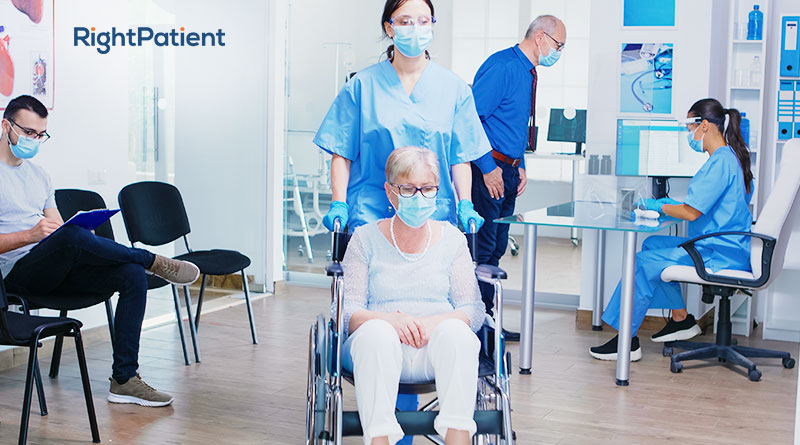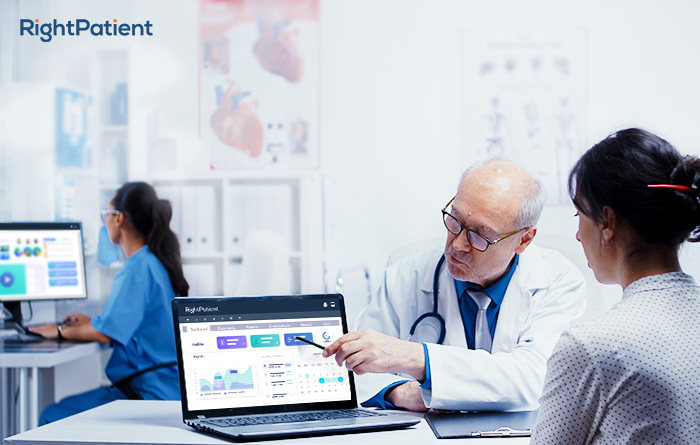The Importance of EHR Optimization and 3 Strategies for Improvement

EHRs and EMRs are used interchangeably and they more or less serve the same function. In a nutshell, EHRs are a crucial part of the U.S. healthcare system and contain virtually all the information physicians and caregivers need to know about the patients. EHRs are required to ensure that the patients are receiving proper treatment plans, healthcare services, and so on. However, using EHRs is not enough – understanding them properly and ensuring EHR optimization is crucial as well, and the latter is something that many care providers miss out on.
That being said, let’s take a look at the importance of optimizing EHRs, how it benefits caregivers, and some strategies that help with optimization.
Importance of EHR optimization
Before diving deep into its optimization, let’s do a quick overview of EHRs.
EHRs are the commonly used abbreviation for electronic health records and may contain a vast amount of health information such as patient names, billing information, progress notes, vitals, medical histories, medications, and treatment plans, lab test results, and much, much more. It is obvious that EHRs are extremely important and have a huge part to play in healthcare outcomes, billing, treatment workflow, etc. As a result, EHR optimization becomes even more important if caregivers want improvements in healthcare outcomes, fewer errors in medical billing, and so on.
Unfortunately, many caregivers don’t keep up with EHR optimization, which leads to piling up issues and errors, unintuitive interface(s), duplicate medical records, and overlays, which cause patient mix-ups. All of this leads to patient safety incidents, preventable medical errors, billing and coding errors, or denied claims – impacting the ROI.
Just implementing an EHR system is not enough – providing ample training, customizing it to the hospital’s needs, ensuring proper governance, and using innovative solutions to bolster EHRs are crucial components to make it work.
That being said, let’s take a look at some strategies that help with EHR optimization and ensure higher ROI, better bottom lines, reduced clinician burnout, fewer medical errors, and improved patient outcomes.
Strategies that bolster EHR optimization
Keeping EHRs accurately updated
Ensuring that EHRs are updated at all times and are free of errors is a must. There are many cases where EHRs aren’t maintained accurately, leading to duplicate medical records or overlays. Not only do these issues with EHRs lead to wrong patient identification, but they also lead to patient safety incidents, denied claims, and might even cause deaths. One way to prevent these issues is by identifying patients accurately at all touchpoints, maintaining patient data integrity in the process.
Receiving and incorporating feedback
One crucial fact that is overlooked by most caregivers is that feedback can lead to a host of improvements and optimization. Being open to feedback, receiving it, and incorporating it from the actual EHR users can drastically improve EHR usability. Physicians, clinicians, and registrars, among others, are the ones who use EHRs, and caregivers who are open to feedback from them can significantly improve their EHR systems by implementing required changes that optimize the workflow. Unfortunately, only around 34% of physicians are asked for feedback regarding the matter.
Using solutions that bolster EHR systems and seamlessly integrate with them
EHRs bring a host of benefits to their users, provided that they are used appropriately and with the right solutions. Even EHR systems require support but that’s due to external factors. For instance, the lack of positive patient identification is still felt across the U.S. healthcare system because there’s still no standardized effective national patient identifier present. If truth be told, there might not be one in the near future – the project has been pending for around twenty years!
However, there are solutions that seamlessly integrate with EHR systems and become part of the EHR workflow, one of the leading ones is RightPatient.
As a touchless patient identification platform, RightPatient has been helping leading healthcare providers by identifying patients accurately in a safe and hygienic manner. Within hospitals, registered patients only need to look at the camera, and once RightPatient finds a match, it provides the EHR user with the accurate medical record.







